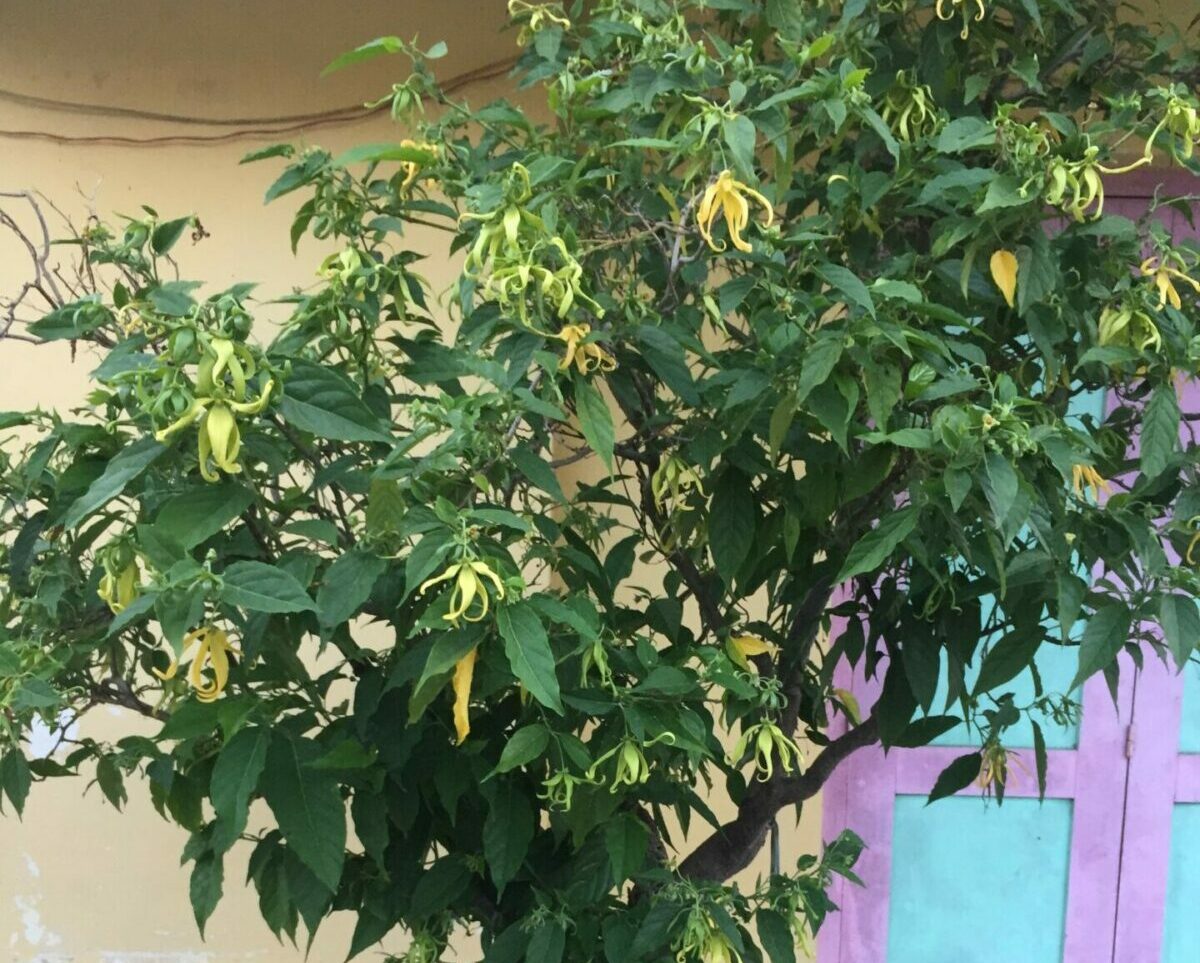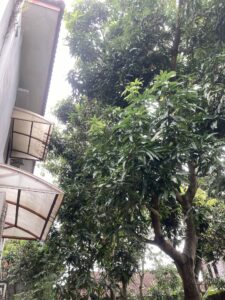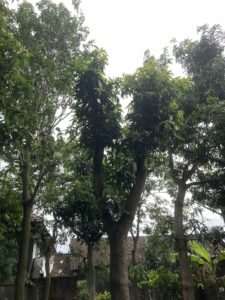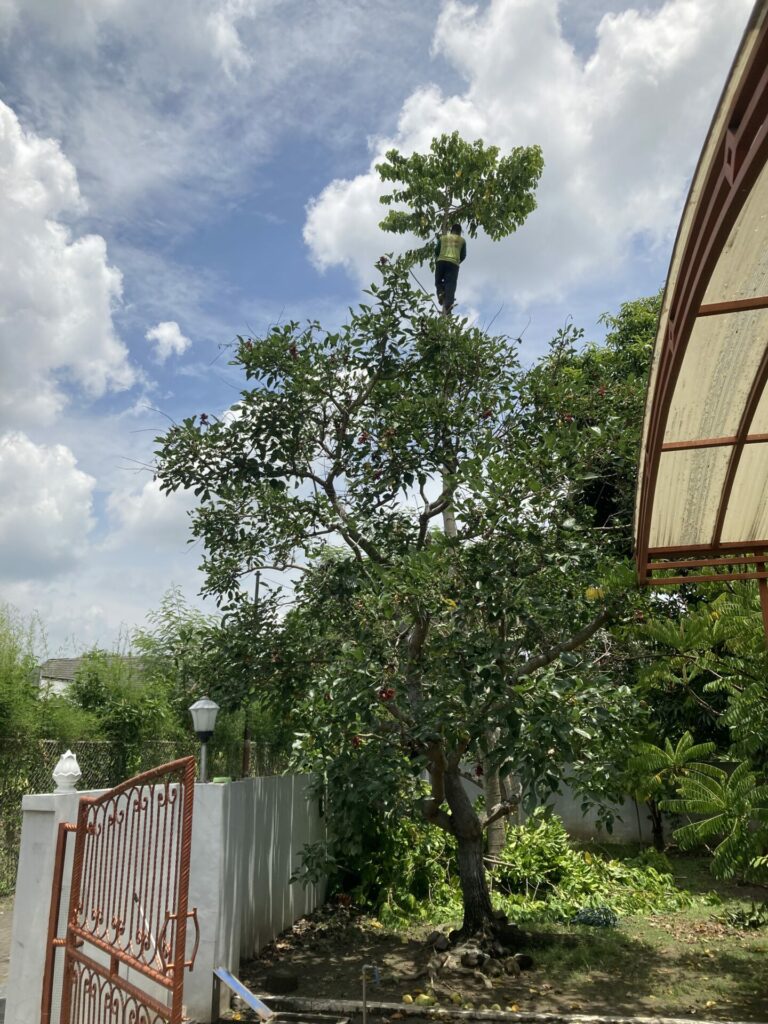Klaten, Central Java. I have spent nearly forty years in East Asia, with the most recent thirty-one in the heartland of Java, where my wife was born and raised.
In Japan, I became acquainted with five seasons, then three in Thailand, and now Indonesia officially has only two: wet and dry. In contrast to Thailand, Cambodia, Laos, Vietnam, and Philippines, one could say Indonesia is almost entirely in the “deep tropics” — the region between ten degrees North and ten degrees South latitude.
Why would that distinction make a difference? Aside from the human experience of temperatures rarely falling below 65 degrees Fahrenheit in the lowlands, there is a different experience for trees.
Close to the equator, the sun is almost directly overhead at noon for most of the year and it arcs very steeply from sunrise to sunset. Rudyard Kipling captured the impression of sudden daybreak in a verse of his poem “Mandalay”: And the dawn comes up like thunder.
As a result, saplings in my cluttered yard (less than a quarter acre, including the house) still grow well, because taller trees that shade the slanting rays of the sun have virtually no effect on the little ones getting sunlight at mid-day. For example, mango seedlings that were once shaded by banana trees outgrew them after three years.
A rule of thumb here for fruit trees is five years from planted seed to harvested fruit. That was true for our mango trees, but after another five years they have become too high to harvest fully, because they flower near the ever-rising canopy to compete for sunlight.
Some neighbors suppress a laugh and gently suggest that I should have started with cuttings to reduce the wait. Others advise that tall mangoes can be severely chopped to a height of five to ten feet with almost no leaves left, and they will then regenerate.
But our gardener (who bicycles to us once a week from his rural village seven or eight miles uphill) pointed out that the two we chopped a year ago aren’t doing well because they are too old — planted long before we bought the land in 2012.
Chopping isn’t the only way that one ends up with dead wood. Benalu vine (genus Loranthus) grows high on trees, typically from seeds dropped by birds. It strangles branches of mangoes and other tall trees which eventually break off and fall — hopefully not on anyone’s head! There are also species of ants that hollow out branches, making them prone to break.
What happens to the dead wood? If you leave it lying on the ground when the monsoon comes, you have invited termites. They are worldwide pests when close to a wooden structure — that’s why we built our house with brick, using teak for doors and window frames. However, they also can get rid of a problematic tree stump fairly quickly. One might even imagine an equation: dead wood + moisture = termites + dirt.
Our gardener introduced us to a tree-cutting expert whom we hired for a day late in 2021. We designated some trees to be killed in addition to the partial chopping of others. After his sons dug a ring about six inches deep around the base of a tree, he used his gasoline-powered chain saw to trim the highest branches followed by the trunk. He then made the final cut at or slightly below ground level. The boys covered the stump with dirt to discourage regeneration and I put a large rock on top to keep the rain from washing off the dirt.
This method got me thinking about how newer technology has changed the phenomenon of tree stumps. Felling via axe needs more clearance below the cut than a chain saw, which is why part of the Paul Bunyan legend was how to trick Babe the Blue Ox into squashing all the tree stumps to ground level.
The chopping expert is adept at dropping the cut wood very close to the base of a tree, minimizing damage to other trees (or structures built for humans). His fee includes hauling away all the large pieces of timber, which can be used for firewood or fencing. Traditional houses here typically have the kitchen stove on the back porch, reducing smoke exposure and fire risk.
Some species of trees regenerate quickly in a warm, wet climate. Slender cassava trunks can be chopped and replanted after their roots are harvested, thereby increasing one’s food supply. Termites avoid felled rubber trees and plumeria (probably due to sap), which soon sprout leaves and roots, making disposal an urgent task. Young rubber trees have too much latex to be usable as firewood.
Part of our clutter is due to “volunteers” that appear after birds and bats drop fruit on our land. A rubber seed got in a few years ago and we soon had several trees after its fruits were dispersed.
As you can imagine, tropical species grow quickly, with several feet a year being common. However, during its regrowth spurt after chopping, a rubber tree grows about a foot a week. We cut one near the house down to human height, but it regrew within a year, again posing a risk to roof tiles in a high wind.
An ylang-ylang sapling that we bought a few years ago also spread to various parts of our yard. In addition, the birds and bats have been the source of several longan seedlings supplementing the two saplings we bought a few years ago. We also have a couple of matoa (Pometia pinnata) seedlings that grew from fruit dropped by the local flying fauna.
Well, that’s a brief summary of the life and death of some trees in our yard. I booked the tree-cutter for a day recently, so those trees he trims will still have a month or two of heavy rain for regrowing leaves. A tended garden inevitably involves some choices, as well as planning which tree species will fruit better with more sunshine.
Images by Author.





